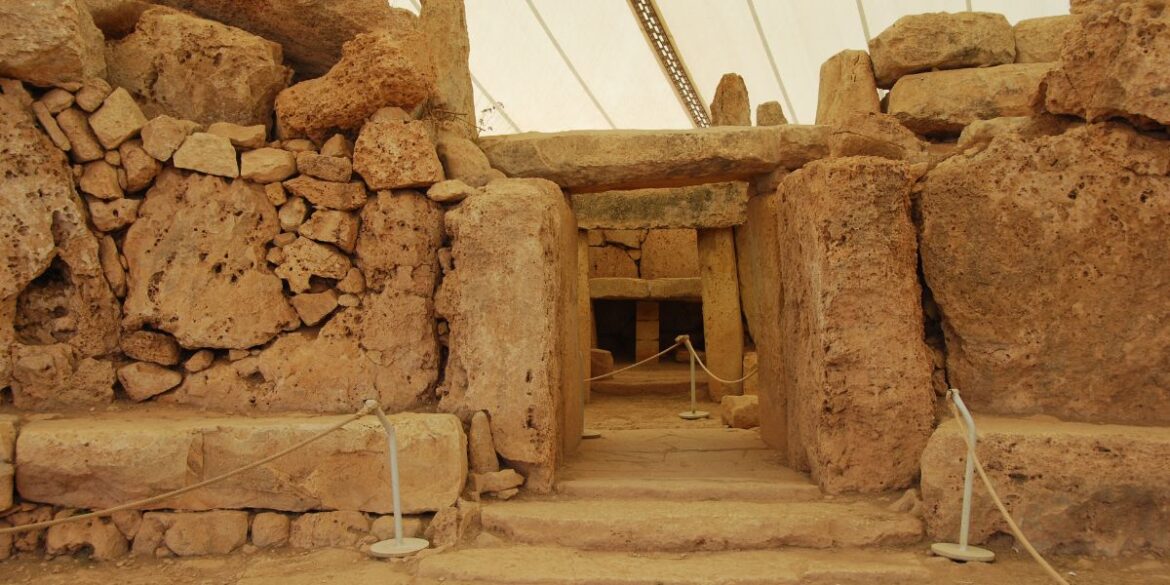The megalithic temples of Malta are among the oldest free-standing structures in the world, dating back to approximately 5000 to 2500 BC. However, there is ongoing debate that these structures and the cultures associated with them could predate our current notion of prehistoric times, as discussed on the popular Netflix series “Ancient Apocalypse” featuring journalist Graham Hancock. These impressive UNESCO World Heritage architectural feats were constructed using large limestone blocks, with the size and weight of these stones varying significantly across different temples in Malta (and the island of Gozo).
Some of the stones used in the construction of these ancient temples are truly massive, with weights estimated to be up to 20 tons (approximately 18,144 kilograms) or more. For example, at the Ħaġar Qim temple complex, one of the largest stones measures around 7 meters (about 23 feet) in length and weighs approximately 20 tons. Similarly, the Mnajdra temple complex, located just a short distance from Ħaġar Qim, features large stone slabs that weigh several tons each. On Gozo, the Maltese temple of Ggantija contains stones weighing up to 50 tons.



Ruins of the Ggantija temple complex on the Island of Gozo in Malta. Images courtesy Aksenovko and Mathess / Getty.
The transportation and erection of these enormous stones without the aid of modern machinery is a subject of much fascination and speculation among archaeologists and historians. Theories suggest the use of wooden rollers, sledges, and possibly even ball bearings made from small spherical stones to move these massive blocks into place. The construction of the temples showcases the remarkable ingenuity and determination of Malta’s prehistoric inhabitants.
RECOMMENDED: Book a Half-Day Private & Guided Tour of Malta’s Temples and Archeological Sites with Soleto Travel
Historical Context
The megalithic temples of Malta were constructed during a period that spans from approximately 5000 to 2500 BC, predating the pyramids of Egypt and the great megalithic sites of Western Europe, including Stonehenge. These structures are remarkable not only for their antiquity but also for the insight they provide into the cultural and religious lives of their builders. Archaeologists suggest that these temples served as focal points for religious rituals, possibly related to fertility, agriculture, and the cycles of life and death.
Debate continues among scholars regarding the origins of the temple builders. Some theories suggest a connection to a broader Neolithic culture spread across the Mediterranean, while others argue for a distinct society that developed independently on the islands. The temples themselves, with their intricate designs and sophisticated construction techniques, point to a society that was both technologically advanced and deeply spiritual.
Architectural Marvels
The architectural prowess displayed in the construction of Malta’s megalithic temples is nothing short of astonishing. Employing stones that weigh several tons, the builders achieved feats that challenge our understanding of Neolithic engineering capabilities. The technique of corbelling, creating domed spaces by layering stones inward, and the use of lintels, large horizontal stones resting atop vertical supports, are evident in these structures. The alignment of certain temples with astronomical events indicates a sophisticated knowledge of the cosmos, further emphasizing the significance of these sites beyond their immediate utility.
The variety of materials used, from local coralline limestone to the harder globigerina limestone, shows an understanding of the properties of different stones and their suitability for specific architectural purposes. The transportation (discussed further on in this article) and placement of these massive stones remain subjects of research and awe, suggesting a highly organized society capable of mobilizing and sustaining large-scale construction projects.
Ancient Temples to Visit in Malta
Ħaġar Qim and Mnajdra
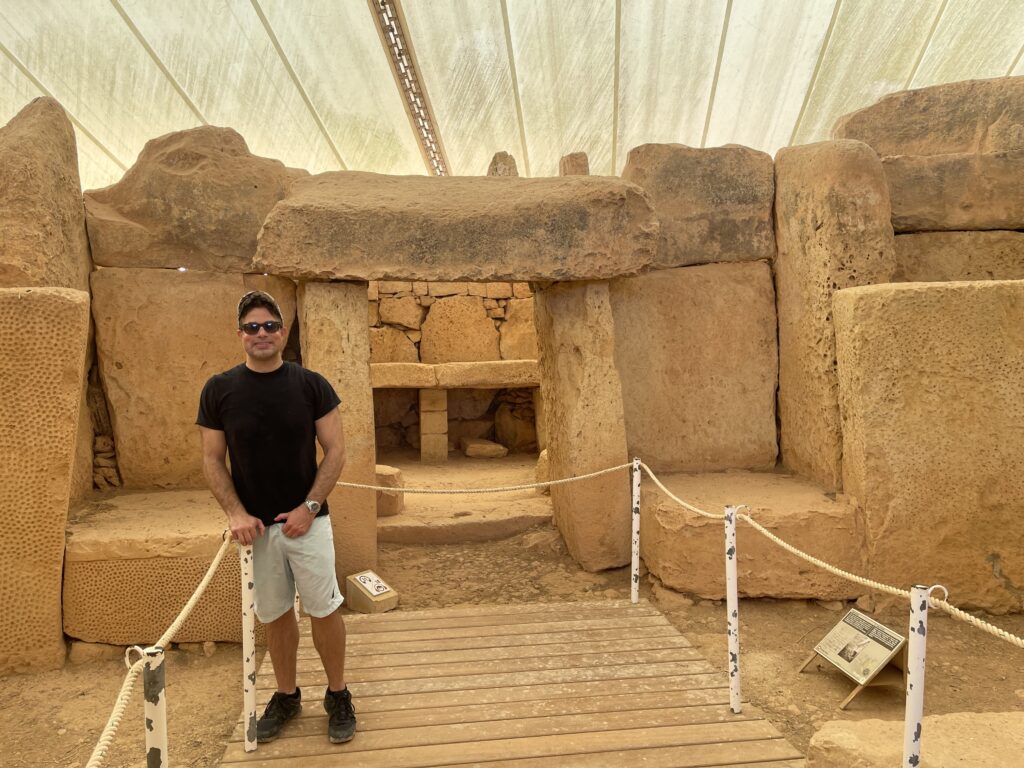
Perched on a hilltop overlooking the Mediterranean, the temples of Ħaġar Qim and Mnajdra are among the most picturesque archaeological sites in Malta. Ħaġar Qim, the older of the two, dating back to around 3600 BC, impresses visitors with its massive façade and intricate inner chambers. A short walk away, Mnajdra sits closer to the sea and is noted for its precise alignment with the equinoxes and solstices, marking the changing seasons with a celestial precision that mesmerizes archaeologists and astronomers alike.
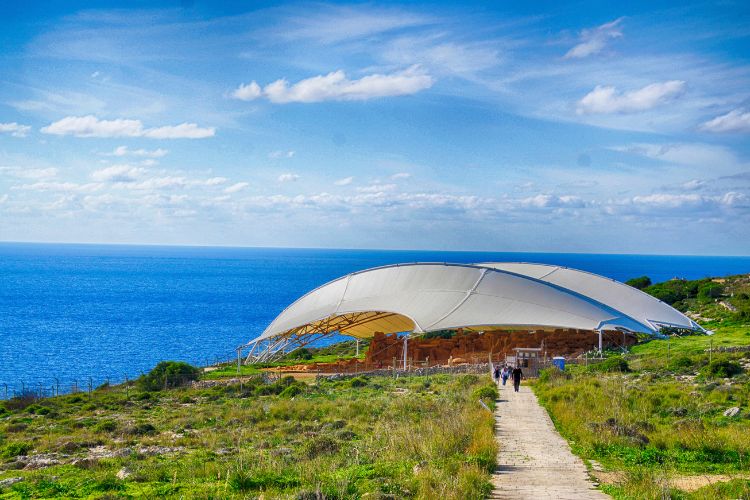
These temples are distinguished by their architectural sophistication and the variety of decorative elements found within their confines, including altars, oracle holes, and carved animal figures. The use of light and shadow, particularly in Mnajdra, enhances the mystical atmosphere of these sites, inviting contemplation of their original ceremonial uses.
RECOMMENDED: Book a Guided Tour to Visit Both Ħaġar Qim and Mnajdra in Southern Malta with Robert Arrigo & Sons




Views of the interior of the Ħaġar Qim Malta temple complex. Here you can see examples of ancient graffiti etched into the stone, as well as intricate intentional carvings, and even a room which appears to almost have a seated, bar-like setting and hangout area.
Tarxien Temples





The entrance and part of the interior of the Tarxien Temple complex in Malta featured above, along with intricate stone carvings and a model of the excavation that can be found at the National Museum of Archaeology in Valletta. Images courtesy Jack F, Alan Fin and Cascoly / Getty.
The Tarxien Temples, located in the heart of Malta, are celebrated for their elaborate decorative stonework, which includes detailed carvings of domestic animals and intricate spiral motifs. Excavated in the early 20th century, these temples provide crucial insights into the religious practices and artistic achievements of their builders. The complex consists of four main structures, each contributing to our understanding of Neolithic ritualistic life, with evidence of animal sacrifice and fertility rites.
The craftsmanship displayed in the stone reliefs and the architectural design of interconnected chambers highlight the Tarxien Temples as a center of cultural and religious activity. The presence of numerous statuettes, including the famous “Fat Ladies” and representations of domesticated animals, suggests a society deeply concerned with fertility, both human and agricultural.
Ggantija Temples
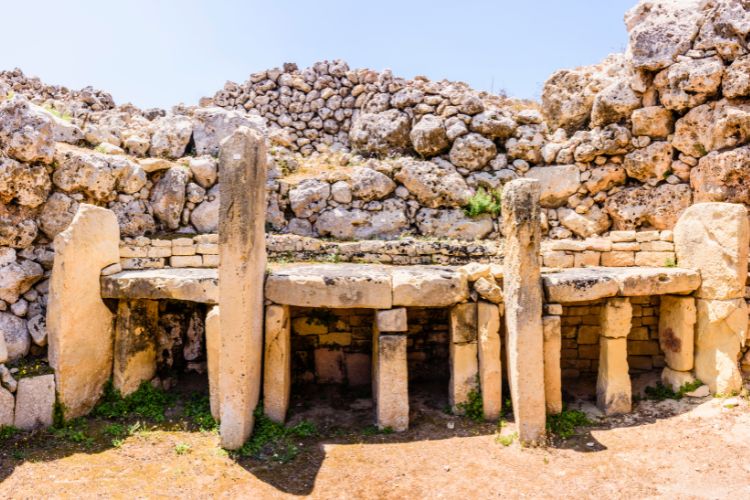
The Ggantija Temples on the island of Gozo are among the oldest and most monumental of Malta’s megalithic sites. Their name, derived from the Maltese word for “giant,” reflects local legends attributing their construction to mythical beings. Dating back to approximately 3600 BC, these temples are characterized by their enormous stone blocks, some of which exceed five meters in length and weigh over fifty tons.
The layout of the Ggantija Temples, with their complex arrangement of apses and central corridors, showcases an advanced understanding of architectural principles. The site’s orientation and the archaeological artifacts found within, including figurines and pottery, provide valuable insights into the religious practices and daily life of the temple builders.
Skorba and Ta’ Hagrat
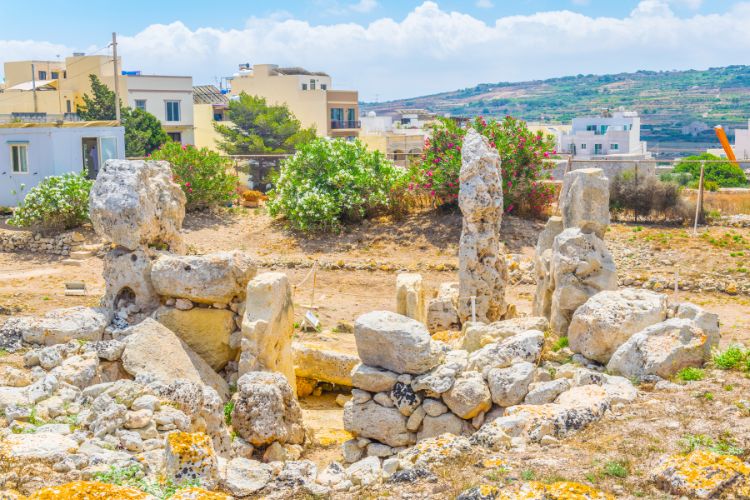
The temples of Skorba and Ta’ Hagrat, though less grandiose than some of their counterparts, offer unique perspectives on the everyday lives of the Neolithic inhabitants of Malta. Skorba, particularly, is crucial for understanding the chronological development of temple architecture on the islands, with remains that suggest habitation and ceremonial use extending beyond the temple-building phase.
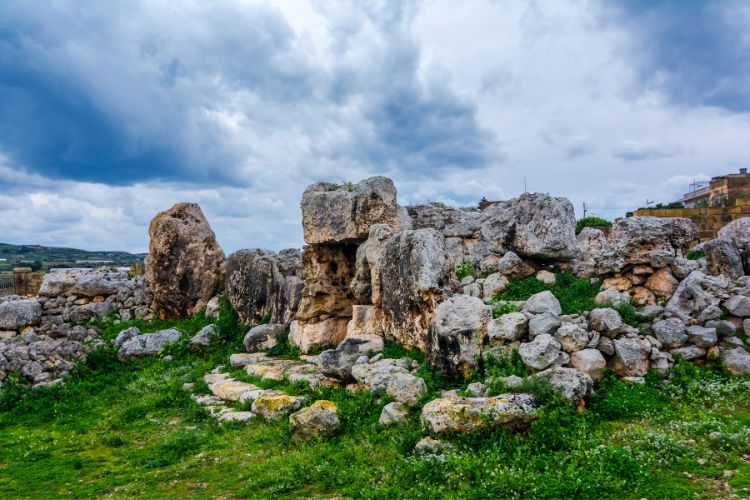
Ta’ Hagrat’s importance lies in its well-preserved façade and doorway, providing a clear example of the temple’s original entrance design. The artifacts discovered at these sites, including pottery, stone tools, and ornaments, contribute to a fuller picture of the Neolithic lifestyle, from domestic activities to ritual practices.
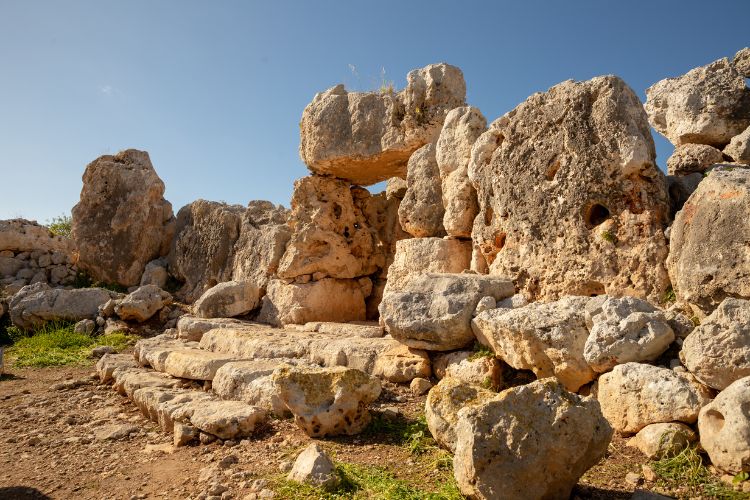
The Enigma of Malta’s Cart Tracks
Near several of Malta’s megalithic temples, curious formations etch the landscape: ancient cart tracks that have puzzled archaeologists and historians for centuries. These parallel grooves, carved into the limestone bedrock, crisscross the Maltese countryside, most notably at sites like Clapham Junction, named for their resemblance to the busy railway network in London. The tracks’ purpose and the technology behind their creation remain subjects of speculation and research, offering a tantalizing glimpse into the prehistoric logistics and transportation methods of the temple builders.
@pastpathways On our recent trip to #Malta 🇲🇹 we discovered cart tracks, perhaps 8,000 years old or more, leading to a couple of the nearby Megalithic Temples, said to be the oldest in the world known to date. The ancient people here would have dragged stones for miles that weighed up to 20 tons, leaving these indentations. Have you visited this magical #Mediterranean island yet? #PastPathways #travel #traveltiktok #traveldiaries #history #archeology #hiking #europe #fyp #fypシ ♬ original sound – PastPathways
Take a look at our recent video on Tiktok above revealing some of Malta’s cart tracks while hiking to Ħaġar Qim and Mnajdra. Be sure to give us a follow as we continue to share more unique insights into Malta’s prehistoric culture!
The cart tracks are believed to date back to the same era as the temples, suggesting a sophisticated level of organization and resource management among the Neolithic inhabitants of Malta. Theories about their function range from irrigation systems to ceremonial pathways, but the most widely accepted hypothesis posits that they were used for transportation. These tracks might have facilitated the movement of materials from quarries to temple sites or served as routes for trade between communities. The precision with which these tracks were carved, maintaining consistent depths and widths across uneven terrain, underscores the advanced engineering skills of their creators. Despite the erosion that has blurred their original form, the cart tracks stand out, showcasing the ingenuity and persistence of Malta’s ancient people.
Their presence near the temples suggests a direct connection between these sacred sites and the broader landscape of Neolithic Malta, hinting at a well-organized society that integrated spiritual, economic, and practical aspects of life seamlessly.
Exploring Għar Dalam: Malta’s Prehistoric Cave
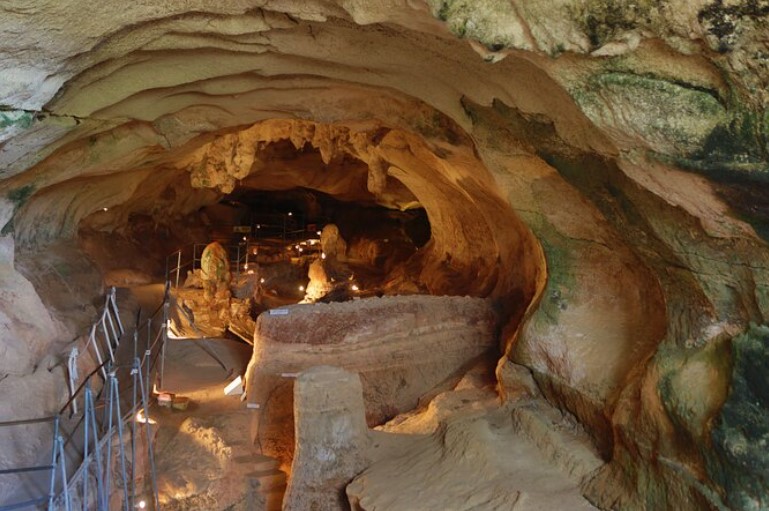
Għar Dalam is an ancient cave that offers a fascinating journey back in time. Situated in the southeastern part of the island, this significant archaeological site is renowned for its rich paleontological and archaeological deposits that date back thousands of years, providing key insights into the island’s natural and human history. The name Għar Dalam means “Cave of Darkness” in Maltese, a fitting description for a place that holds secrets from as far back as the Ice Age.
The importance of Għar Dalam lies in its layers of fossilized bones and artifacts, which have been meticulously studied to reveal the types of animals that once roamed Malta and the early human settlers that lived on the island. The cave has yielded remains of dwarf elephants, hippopotami, micro-mammals, and birds, among other species, painting a vivid picture of a bygone ecosystem that thrived before the arrival of humans. Additionally, the lower strata of the cave have provided evidence of the first human presence on Malta, dating approximately 7,400 years ago, making it a crucial site for understanding the island’s prehistoric human occupation.
Visitors to Għar Dalam are treated to an insightful experience, where they can explore the cave’s museum that displays an extensive collection of fossils and artifacts excavated from the site. The cave itself, accessible to the public, allows one to walk through a section of this natural time capsule, where the environment is carefully preserved.
Preservation and Challenges
The preservation of Malta’s megalithic temples and archeological sites is an ongoing challenge, compounded by natural erosion and the impact of human activity. Efforts by local and international bodies, including UNESCO, aim to mitigate these threats through various conservation strategies. These include structural interventions to stabilize the buildings, controlled access to reduce wear from visitors, and environmental monitoring to address the effects of climate change.
Despite these efforts, the temples remain vulnerable to the elements and the pressures of tourism. The delicate balance between making these sites accessible to the public and preserving them for future generations is a constant concern for conservators and archaeologists.
Visitors to Malta’s megalithic temples are encouraged to approach these ancient sites with respect and curiosity. Guided tours offer insights into the history, architecture, and archaeology of the temples, enhancing the experience of walking through these prehistoric structures. When planning a visit, consider the time of year and day to avoid the peak tourist seasons and hottest part of the day, ensuring a more intimate and reflective visit.
Sustainable tourism practices are vital for the preservation of these sites. Visitors are urged to follow all guidelines and restrictions, including those related to photography and physical contact with the structures. By respecting these ancient marvels, we contribute to their ongoing preservation and the continued enjoyment of future generations.
Things to Do in Malta, Guided Tours of Temples & Other Archeological Sites
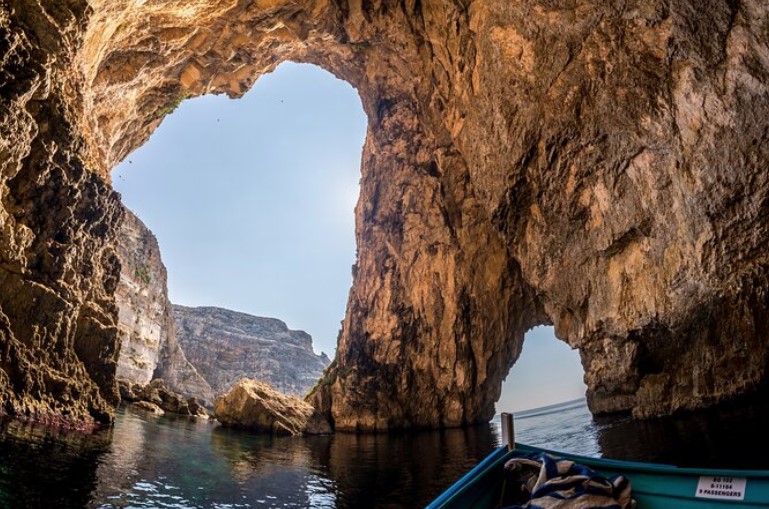
Our favorite method for exploring Malta’s historic sites is by booking a guided tour with The Island Traveller, as they lovingly call their “Monumental Maltese Experience.” They simplify your adventure with a private, self-guided tour featuring door-to-door pickup and drop-off service, eliminating the need for car rental.
Immerse yourself in history with detailed audio guides available in five languages, and enjoy seamless access to museums with pre-booked tickets to bypass the queues. The journey doesn’t end at the temples; it also encompasses visits to the picturesque fishing villages of Marsaxlokk and Wied iz-Zurrieq. You’ll have the opportunity to savor exquisite seafood, enjoy local cuisine and wine, and opt for a scenic boat ride showcasing the breathtaking Mediterranean landscape.
Contact The Island Traveller today to customize your day with additional sights at no extra cost. Experience the convenience of independent travel without the hassle, all while being whisked away from your accommodation to these monumental sites.
More Top-Rated Malta Tours & Guided Temple Experiences
Exploring Malta Beyond the Temples
Malta, rich in history, culture, and natural beauty, offers a plethora of experiences beyond its ancient temple sites. For enthusiasts looking to imbibe the essence of the island through its flavors, a foray into Maltese wine tasting is a must. We recently combined a trip focusing on historical tourism to the island with a deep dive into the country’s wine culture. The islands boast a burgeoning wine industry that, while young by European standards, has quickly gained acclaim for its high-quality wines. Native grape varieties such as Gellewza and Ġirgentina produce unique wines that capture the essence of Malta’s terroir. Several boutique wineries offer tours and tastings, from vine to bottle, against the backdrop of scenic vineyards. These experiences often come with the opportunity to savor local Maltese cuisine, creating a delightful fusion of tastes and traditions.
Beyond the realm of gastronomy, Malta’s architectural heritage offers a journey through time, from the Baroque grandeur of Valletta, also a UNESCO World Heritage site, to the silent city of Mdina, with its timeless streets and noble palaces. The islands are also a haven for water sports enthusiasts, offering some of the Mediterranean’s clearest waters for diving, snorkeling, and swimming. The Blue Grotto and the nearby wreck dives provide mesmerizing underwater experiences, showcasing a vibrant marine life and hauntingly beautiful sea caverns.
For those seeking relaxation, Malta’s beaches range from the sandy shores of Mellieħa Bay to the hidden gems of the Blue Lagoon on Comino, offering pristine waters and tranquil retreats from the bustling towns.
